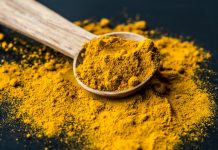
A pain that lingers, refusing to budge for weeks, months, or even years, can certainly take a toll on daily life.
This persistent guest, known as chronic pain, affects an astounding number of people worldwide, potentially hindering work, social interactions, and general well-being.
While medicines and therapies are conventional routes to manage this persistent ache, an often-underlooked ally in this battle is our diet.
In this friendly chat, let’s unravel how our plates and our pains are linked, and explore some foodie tips and insights, all grounded in science yet dished out in an easy-to-digest manner.
Chronic Pain and Diet: What’s the Connection?
Picture this: your body as a complex, highly-sophisticated machine. Like any machine, it needs quality fuel (food) to run smoothly.
Now, imagine if the fuel you use is sub-par; the machine won’t operate efficiently and might even start to break down (hello, pain!).
The nutrients you consume can influence the body’s inflammation levels, a key player in chronic pain, steering it either towards or away from pain management.
Scientific studies have demonstrated this interplay. For instance, a research study led by Dr. Artemis Simopoulos, published in Biomedicine & Pharmacotherapy (2002), pointed out the influence of fatty acids in our diet on inflammatory processes within the body.
Similarly, research in the Journal of Alternative and Complementary Medicine (2010) underscored how a plant-based diet can reduce pain due to its anti-inflammatory properties.
Thus, what we munch on can indeed be a crucial part in the tale of managing chronic pain.
Pain-Soothing Superfoods: What to Add to Your Plate?
Our food choices can wield a powerful wand in managing pain and inflammation. Here’s a simple guide to foods, backed by research, that could be your partners in pain management:
Fatty Fish: Think salmon, mackerel, and sardines. Packed with omega-3 fatty acids, which, as per a study in Surgical Neurology (2009), have been observed to reduce back pain for some individuals.
Leafy Greens: Kale, spinach, and other green heroes, rich in antioxidants, play a vital role in curbing inflammation, a fact supported by research in the Journal of the American College of Nutrition (1999).
Berries: Your strawberries, blueberries, and their berry buddies contain antioxidants known as anthocyanins, highlighted for their anti-inflammatory properties in a study from the Journal of Agricultural and Food Chemistry (2004).
Nuts and Seeds: A handful of almonds or flaxseeds could also assist in the battle against pain due to their healthy fats and anti-inflammatory properties, as discussed in an article in the American Journal of Clinical Nutrition (2016).
Strategizing Your Pain Management Diet
So, how do we translate the knowledge of these pain-soothing foods into daily eating habits? Here are some gentle nudges to help you sculpt a pain-managing diet:
Balance is Key: Ensure your meals are a harmonious medley of proteins, fats, and carbohydrates. Think grilled fish (proteins and healthy fats) with a side of sweet potato (carbs).
Snack Wisely: Choose anti-inflammatory snacks like a bowl of mixed berries or a handful of nuts to keep your fuel clean and beneficial.
Hydrate, Hydrate: Don’t forget to sip ample water through the day to keep the body’s processes, including those managing inflammation and pain, running smoothly.
This exploration into the food-pain relationship doesn’t promise an instant pain-vanishing act, but it does open the doors to understanding and utilizing a powerful tool that’s within our control: our diet.
Integrating these food choices and strategies into your routine could be a wholesome, supportive step in managing chronic pain and enhancing your quality of life.
And remember, every journey is personal, so feel free to adapt these tips to what suits your body and palate best, perhaps with a chat with a healthcare professional or a nutritionist. Here’s to finding comfort, one thoughtful bite at a time!
Follow us on Twitter for more articles about this topic.
Copyright © 2023 Scientific Diet. All rights reserved.








